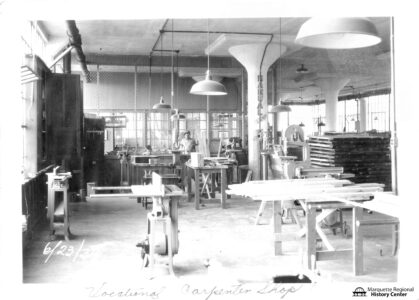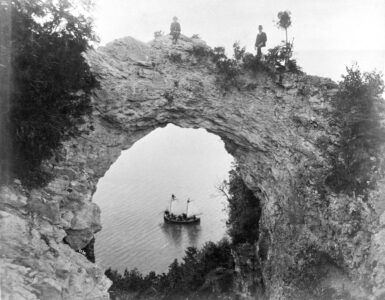William Gwinn Mather: mining chief

William Gwinn Mather
MARQUETTE — Marquette often honors our county’s most important citizens with very short streets. Consider Mather Street, which runs east just one block from Fourth Street to Third Street between Fisher Street and the U.S. 41 bypass.
It is named for William Gwinn Mather (1857-1951). As leader of Cleveland-Cliffs for six decades, Mather exerted great influence over the lives of mine workers in Marquette County.
The Mather family lineage includes some of the best-known Puritan leaders in America, including Richard Mather (1596-1669), Increase Mather (1639-1723), and Cotton Mather (1663-1728). These Mather ancestors helped to shape the history of New England.
William Gwinn Mather was born Sept. 22, 1857 in Cleveland, Ohio. His father, Samuel Livingston Mather (1817-1890), had been deeply involved with developing Upper Peninsula operations for the Cleveland Iron Mining Company for a decade by this time. William’s mother was Elizabeth Lucy Gwinn (1824-1908) from Buffalo, New York.
William attended Cheshire Academy in Cheshire, Connecticut. He then earned an undergraduate and master’s degree at Trinity College in Hartford, Connecticut, finishing his education in 1877. In 1878, young Mather joined the Cleveland Iron Mining Company, working as a clerk in Ishpeming. His business acumen and excellent memory helped him advance, and by 1885 he was promoted to vice-president.
Samuel Mather died in 1890 while the Cleveland Iron Mining Company was in merger negotiations with the Iron Cliffs Company which resulted in the formation of the Cleveland-Cliffs Iron Company. In 1891, William took his father’s position as president, a role he held until 1933. He thereafter served as the company’s board chairman until 1950.
In his 60 years leading Cleveland-Cliffs, William G. Mather proved that he sincerely cared for his company and workers. In an era characterized by ruthless industrialists exploiting laborers, Mather expressed quite progressive humanitarian views.
Addressing the Lake Superior Mining Institute in 1898, William G. Mather outlined what he declared was the Magna Carta of mining. He argued that workers needed job security, good housing, schools, and adequate medical care.
Mather also had a penchant for leading ambitious development projects. Cleveland-Cliffs acquired land on Grand Island in Alger County in 1900. Mather established a large game preserve on the island, stocked with exotic animals including elk, caribou, and albino deer.
In 1906, Mather hired nationally famed Boston-based landscape designer Warren Henry Manning (1860-1938) to develop a safe and verdant community for Cleveland-Cliffs workers in Marquette County. He named this new settlement Gwinn, his mother’s maiden name. This “Model Town” was constructed between 1907 and 1915.
In 1908, he commissioned talented architect Charles A. Platt (1861-1933) to design a mansion in Bratenahl, Ohio, a village bordering Cleveland. He named this manor the Gwinn Estate. Mather lived between this palatial Ohio home and the Upper Peninsula.
In 1929, Mather proved his commitment to Cleveland-Cliffs beyond any doubt. After the stock market crash that occurred in October of that year, the company had difficulty obtaining credit. Mather put up his own fortune to secure financing for the company.
That same year, at 71 years of age, Mather wed for the first time, marrying his neighbor at Gwinn Estate in Ohio. His 38-year-old bride was Elizabeth Ring Ireland (1891-1957). She was the daughter of Saginaw, Michigan, timber baron Clark Ring (1862-1933). Elizabeth was also the widow of James Ireland (1878-1921), partner in the Cleveland-based M.A. Hanna Co., which had iron holdings in the Duluth area. She had a son from her previous marriage and bore no children by Mather.
William Gwinn Mather died April 5, 1951 in Ohio, at the age of 93. He was remembered as a gentle man with a generous spirit. In his life, Mather was involved with community causes. Among many other acts of charity, he built a hospital in Munising in 1910, gave a gothic chapel to Trinity College in 1931, and served on the board of directors of the Cleveland Museum of Arts from 1918 to 1949. When he died, he left more than $3.7 million to causes in Cleveland and the Upper Peninsula.
In 1990, Mather was posthumously inducted into the National Mining Hall of Fame in Leadville, Colorado. That institution celebrates Mather as one of America’s leading industrialists and philanthropists.
William Gwinn Mather is remembered as decent man in an industry that often showed no kindness to its laborers.




